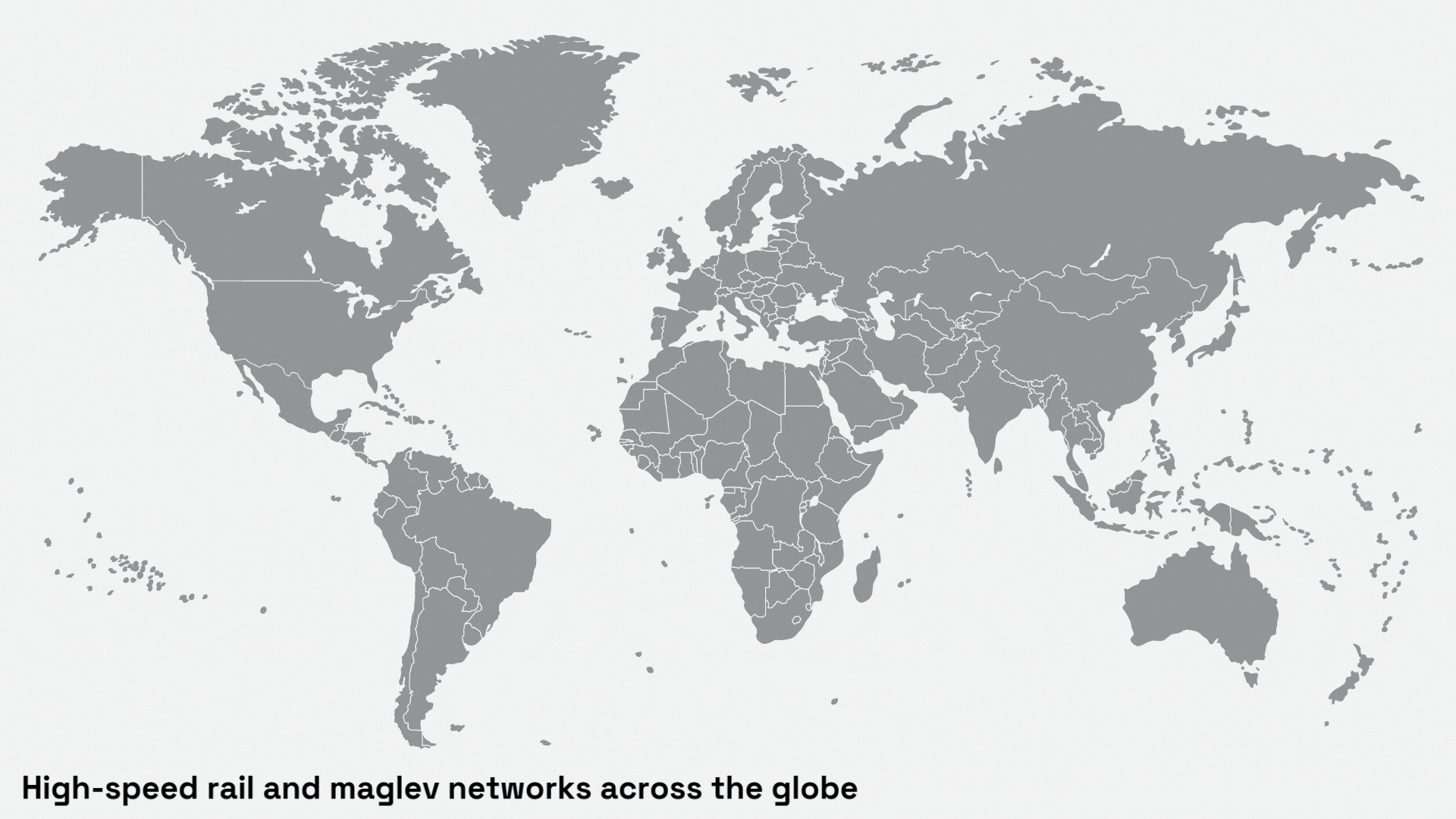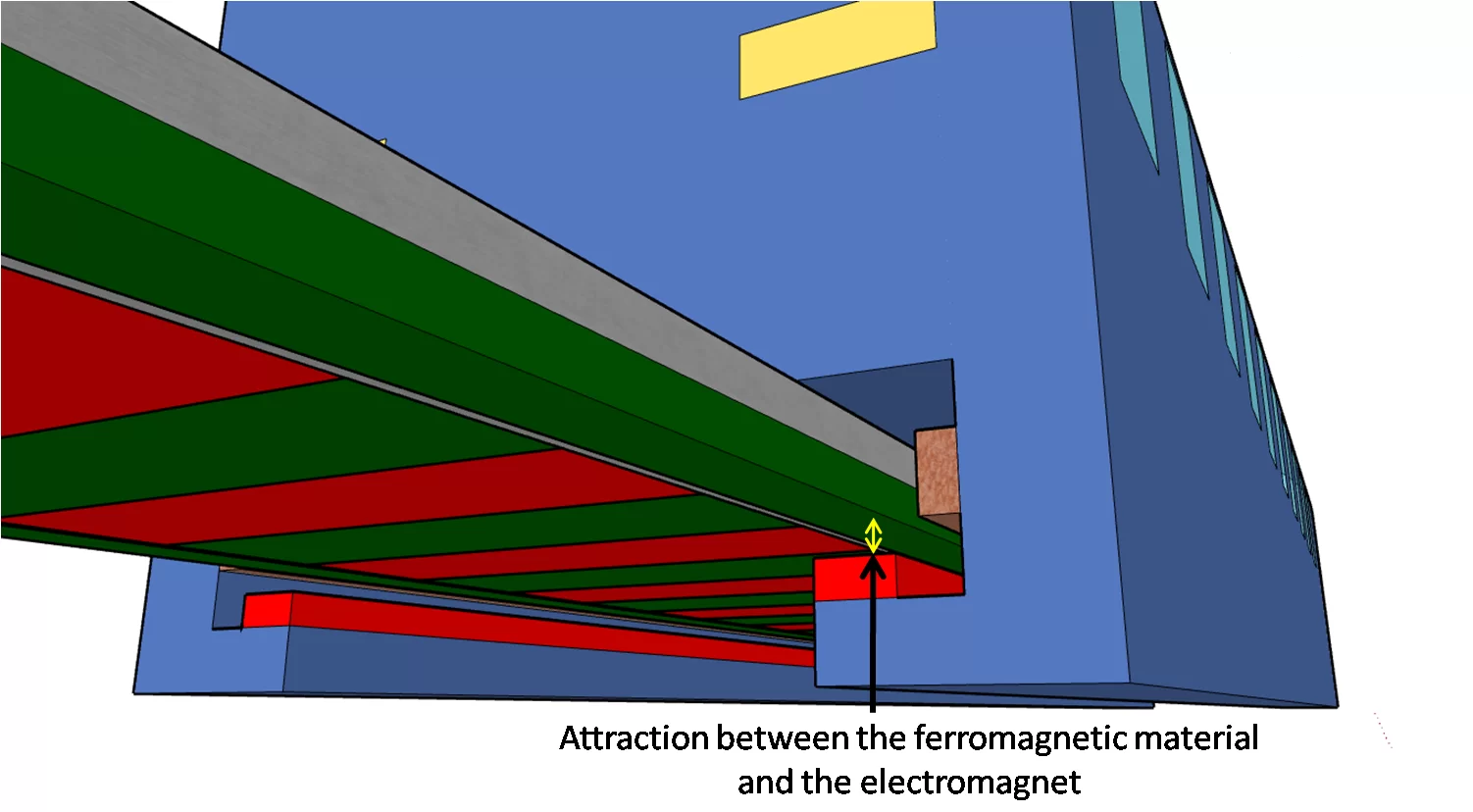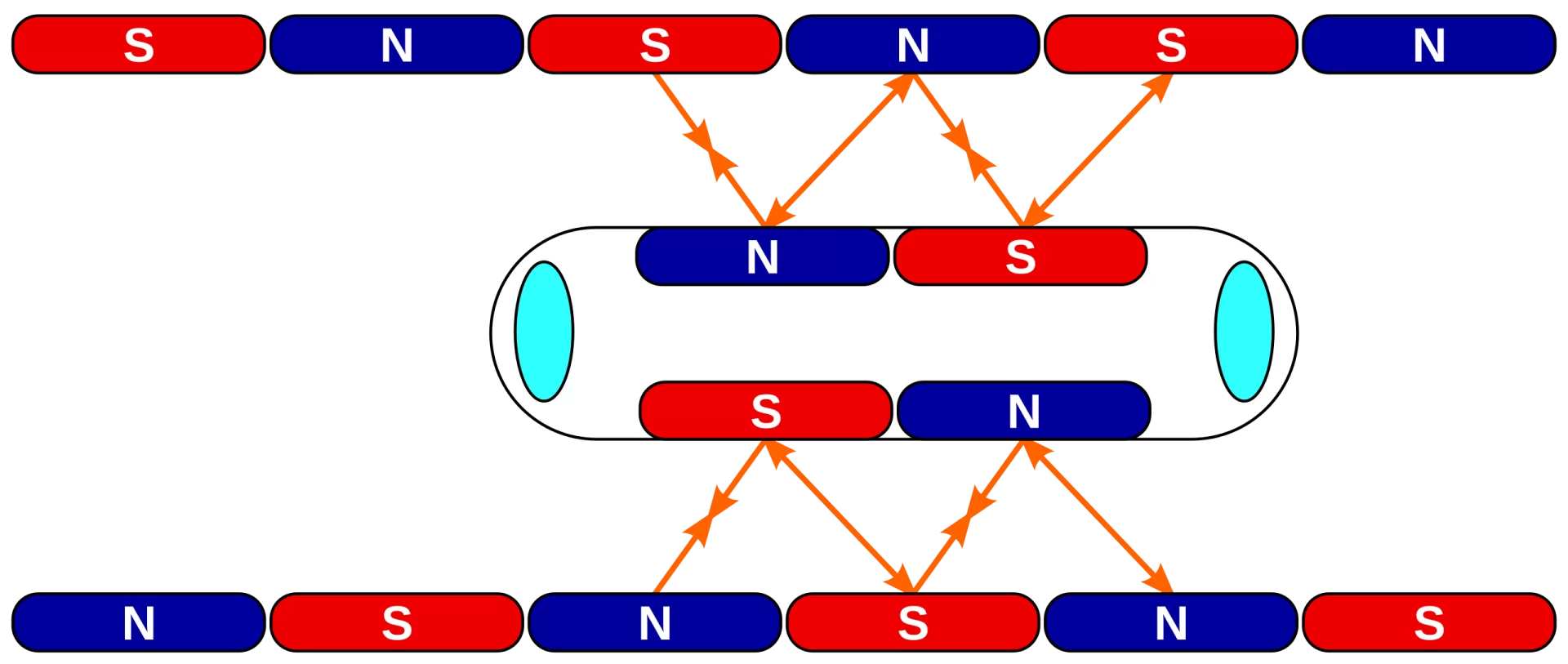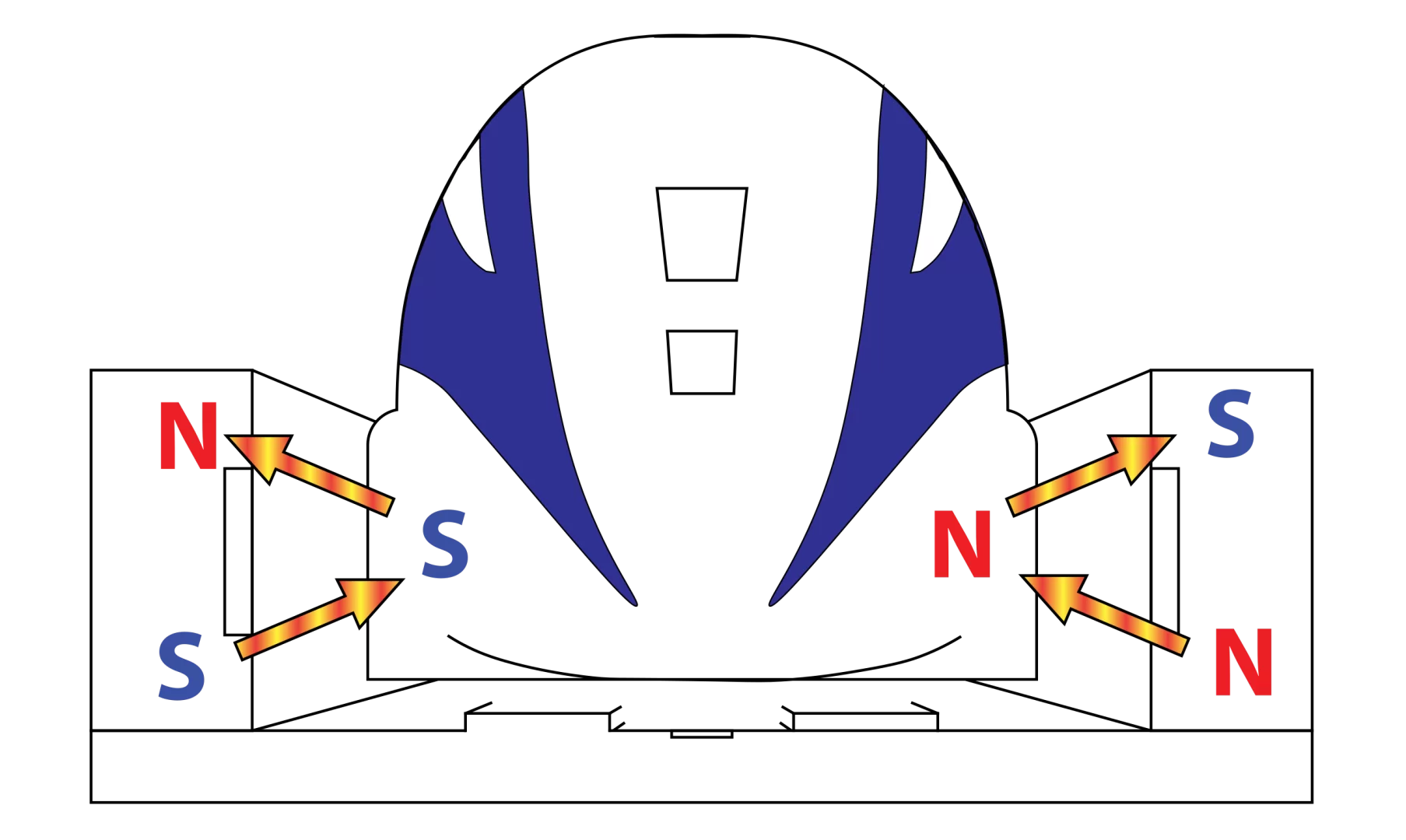
Super fast, high-tech maglev trains are not just cool. They’re transforming the way the world works.
Words by Elle Hardy
Ever since the world’s first high-speed rail (HSR) service, Japan’s Shinkansen, opened between Tokyo and Osaka on 1 October 1964, bullet trains have captured the travelling world’s imagination.
Known as bullet trains thanks to their distinctive nose, the threshold for bullet status is generally accepted as trains that can reach speeds of greater than 250 km/h. There are currently two main types of bullet trains: HSR and magnetic levitation, or maglev.
Last month, create told the stop-start story of HSR in Australia and compared the length of routes across the world. Now, here’s a look specifically at how maglev trains match up to regular HSR.

The maglev revolution
Superconducting maglev trains float above the track through an electrodynamic suspension system which uses magnets to repel the train cars from the guideway rather than attract them.
The rails contain two sets of cross connected metal coils wound into a figure eight loops to form electromagnets. In order to make them superconducting, the electromagnets are cooled to around minus 230°C. This generates magnetic fields up to 10 times stronger than ordinary electromagnets.
Maglev trains rest on rubber wheels that, once they reach 150 km/h, create a magnetic force strong enough to lift the train 100 mm off the ground. Because the loops are made from conductive materials such as aluminium, when a magnetic field moves past, it creates an electric current that generates another magnetic field. The very forces that lift the train also thrust it forward and keep it centred on the track.
As they do not rely on friction, maglev trains have superior acceleration and braking compared to other HSR technology. Though very expensive to construct – the only commercial maglev systems in operation are in Japan, China and South Korea – their maintenance costs are relatively low.
How it works











There has famously never been a single fatality on Tokyo’s Shinkansen, in operation since 1964, nor its maglev line, which has been running since 1998. Because maglev trains rely on magnetic levitation and guidance, they do not require active control or power. In Japan, they have not derailed in earthquakes. Maglev trains have both wheel disc brakes and aerodynamic brakes, and can be safely stopped when travelling at 500 km/h.
What’s next?
HSR and maglev routes and networks will continue to be built around the world, allowing people to live further from places of work and offer a cleaner, greener way of transportation particularly when compared to cars and aeroplanes.
Automation and AI are both expected to be introduced to bullet trains, with China and Japan already experimenting with driverless technology. Turkish researchers have also found ways that machine learning can help improve maglev trains, particularly when it comes to energy efficiency and carbon emissions.
Some in the sector believe that Maglev technology could eventually be used for freight and industry, and even be applied to space launches.


